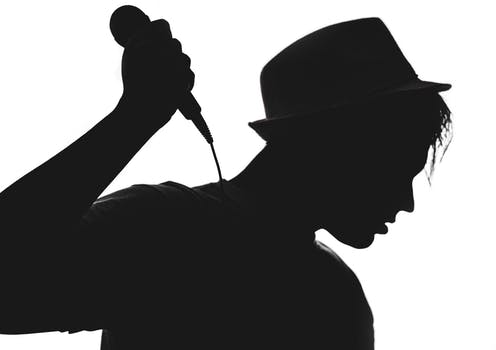If you just got a new condenser mic then the question you are definitely thinking about must be “How to power a condenser mic?”
This question and how to connect a condenser mic to a laptop are the two most common question I get from people trying to get their mic to work for them
Not to worry… in this article I will be giving you a step by step guide to powering your condenser mic and getting it to work for you
Do you need phantom power for condenser mic?

Yes you do
If you have no idea, phantom power is an audio interface preamp that supplies a condenser microphone with enough electrical power to give it enough volume and improve the sound quality
Before we begin, there is something really important I need to tell you about
If you are not familiar with the design of the condenser mic, then I can clearly tell you that it is a lot different from the dynamic mic
It has three essential parts – a back metal plate, a condenser microphone diaphragm and then a capacitor which is situated inside the capsule of the microphone
What happens is that as you start to record your vocals, the diaphragm detects a change in the air pressure and then sends waves to the back plate which in turn returns it back to the diaphragm
But there is a critical issue with this electric signal
It is not strong enough and as a result the volume of your recording may be very low
If you really want to be heard on the speakers and you want your recordings to pop, then you need an external power
This is where a phantom power comes in
Unlike dynamic microphones, using a condenser mic without phantom power is a waste of time as your audio recordings will be very low and poor quality
So how do you power it?
Related: 10 Best Condenser Microphones
How to power a condenser microphone
The most popular and common method is to use 48V phantom power
This is the best way if you are interested in doing any home or studio recordings as it is affordable and very effective
When you get one of these, the only thing you need is to connect it with an XLR cable to your condenser mic
One thing you should be aware of is that there are a lot of 48V phantom power options out there and the one you choose is definitely up to you.
Here is an awesome choice from Amazon.com listing with lots of positive reviews and is even bestseller.
Here is a Youtube video showing how to do this with a 48V phantom power
Another option which is quite old school is to invest in a vacuum tube which will help you boost the electric signal emitted by the capsule
While not as popular as using the 48V phantom power method, it is quite effective and creates a warm and pure sound
A vacuum tube has its own power supply and is definitely a cheaper method to the above mentioned option
Wait, you do not know where to a get a vacuum tube?
Here is the Nobsound NS-10P Mini Vacuum tube from Amazon.com which is awesome and has a lot of positive reviews
Lastly, you can also power your condenser mic through an electret.
An electret is a dielectric unit that is either attached to the back plate or the diaphragm and provides a constant power supply that runs on batteries.
The electret method is used with microphones that are installed in phones, laptops, and other tech gadgets.
A few things to be cautious off when powering your mic
- Make sure you never plug in your mic if the phantom power is already on. Doing so will result in short circuits and your mic circuit burning is care is not taken.
- Also make sure you invest in a phantom power interface that is adequate for your condenser mic. This is so that if the voltage is low, then the two can work together without any disruptions to your equipments
Frequently Asked Questions
1. Do condenser mics need power?
Yes
This is because for the capacitor in the condenser mic to work, it needs an outside energy source to work
This outside energy source is what is known as phantom power
This is unique to only condenser microphones, as dynamic microphones do not need any external power to work
2. Do you need a soundcard for a condenser mic?
Yes you definitely do
And you do not need a huge budget sound card
It is very possible to get this microphone to work really well with a simple USB soundcard
3. Can Phantom power damage a condenser mic?
The answer is no
There is nothing like too much phantom power when it comes to powering a condenser mic
Will a damage a dynamic mic? Highly unlikely.
It will just not work properly
4. Is a preamp the same thing as phantom power?
No – they are two different things
The preamp takes the signal from the mic element and then converts it to a low impedance,balanced signal
This signal is suitable for connection to your condenser mic using the XLR port input with phantom power
The preamp also converts phantom power to bias power which helps to operate the condenser mic
So they are clearly two different things and not the same
5. How do you take care of a condenser microphone
- Always use a pop filter when recording vocals as this helps reduce sibilance and also prevents saliva from getting into the mic
- Keep the mic in a plastic bag or air tight container to avoid dust and stains from getting into it
- Make sure whoever you are recording stands at least 6 inches away from the mic to prevent plosives from entering the mic
- NEVER, ever turn on the power supply for a vacuum tube condenser mic before connecting the mic

